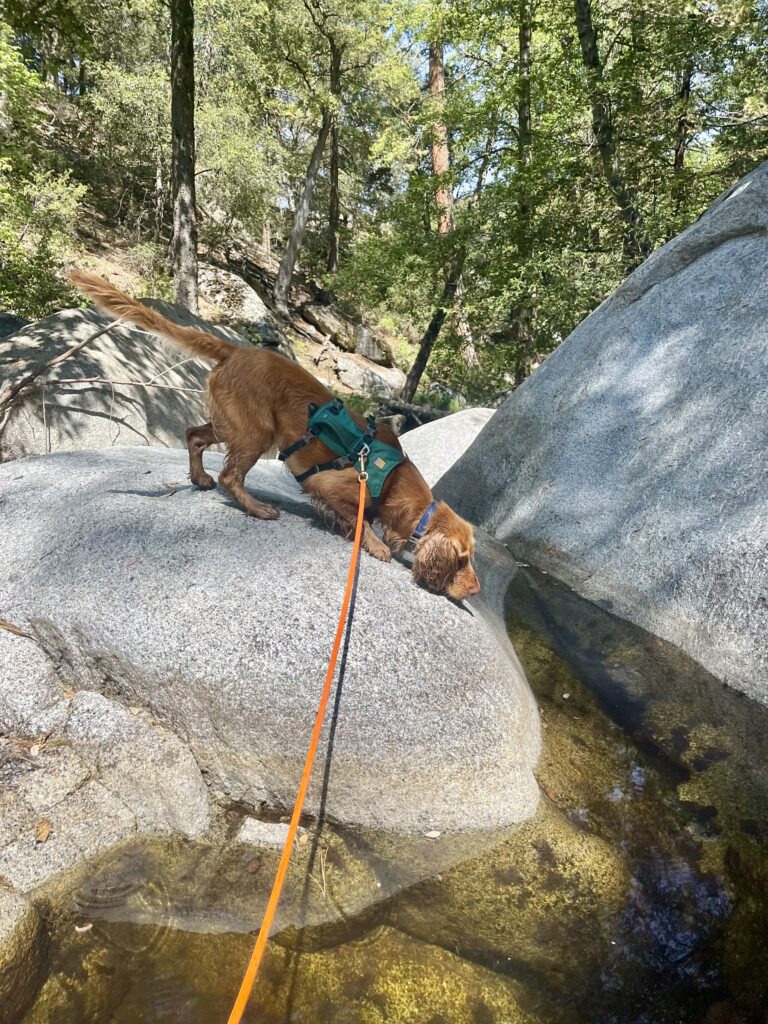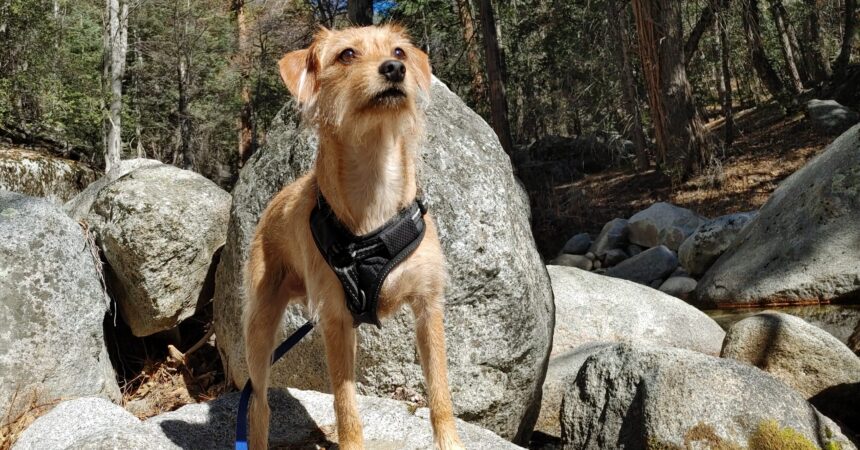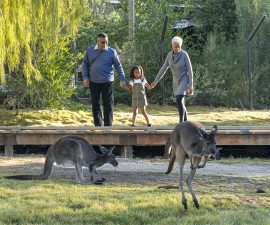Michelle Curtis is a research associate in recovery ecology at San Diego Zoo Wildlife Alliance.
Every year, San Diego Zoo Wildlife Alliance reintroduces hundreds of endangered mountain yellow-legged frogs into their native habitats in the Southwest. After reintroduction, we also conduct surveys to gather data on their movement, disease prevalence, and growth rates to evaluate success. Like many amphibians, mountain yellow-legged frogs are small and challenging to spot. They may hide under rocks, in boulder caves, in leaf litter, or even underwater. To help in our sustainable conservation efforts, scent detection dogs sniff out hidden frogs that would otherwise be impossible for us to find.
Dogs have an incredible sense of smell—far more sensitive and specialized than our own. People have long partnered with dogs for hunting, as well as for tracking and locating explosives, smuggled goods, illegal drugs, and invasive species. More recently, dogs have also helped detect diseases, including cancer and COVID-19. Partnering with detection dogs in wildlife conservation is an area that continues to grow in popularity. In fact, a small group of San Diego Zoo Wildlife Alliance conservation biologists and volunteers have been working with some of their canine companions, affectionately known as the “frog dogs,” relying on their extraordinary sniffers to locate Southern California’s endangered mountain yellow-legged frogs.
But first, these dogs have to learn to detect the scent of the frogs. By making the process fun and engaging, dogs associate scent detection with treats and toys, which in turn builds their confidence and enthusiasm in the search, making it an exciting journey with their biologist companion. The initial introduction to scent detection is rather simple, and we want the dogs to become accustomed to using their sense of smell over other senses—so, while the dog watches, we toss a treat or a toy into a field of tall grass and then we let them search for it. Gradually, we make the searches more complicated. For example, we may hide the item in a multi-room home, or in a large outdoor area.

Once a dog can confidently and independently search for toys and/or treats, we transition to teaching them to locate and indicate a targeted scent. In this sense, an “indication” is how the dog communicates to us that it has located the targeted scent. An indication might include a behavior like sitting, lying down, or a freezing and staring—and each dog’s indication is different. We chose a red Kong, a common chew toy for dogs, for our initial target scent, and we reward the dog with a treat or a toy when they locate the target. This intermediate step is where we build the foundational skills of searching for a target scent, while changing the training locations challenges them to remain focused on the task.
Once a strong foundation with the target scent is built, transitioning to other odors is easy. At this point, they know and understand the “game,” and just need to become familiar with a new odor. We use scent swabs to transport the frog scent to sites that are similar to where we’ll ultimately search for frogs, including mountainous regions near aquatic environments like ponds and streams. How a dog searches, and their ability to locate a target, can be affected by terrain, time of day, temperature, wind, humidity, and elevation. This makes working and training in environmentally relevant conditions extremely important.
Scent detection dogs are most helpful when our chances of seeing frogs is lowest, and at conservation sites where other detection tools, such as our long-range PIT tag reader, are least effective. Frog dogs are especially helpful at locations with untagged frogs, low frog populations, or deep pools that are too challenging to scan with the long-range PIT reader.
The incredible natural abilities of these frog dogs give us the opportunity to better assess the presence or absence of endangered mountain yellow-legged frogs in specific areas, furthering conservation across our Southwest Conservation Hub—all with the help of our remarkable companions becoming wildlife heroes—giving us hope for the future, right here in our own backyard.
Meet the team of conservation canines who are helping to save mountain yellow-legged frogs.





